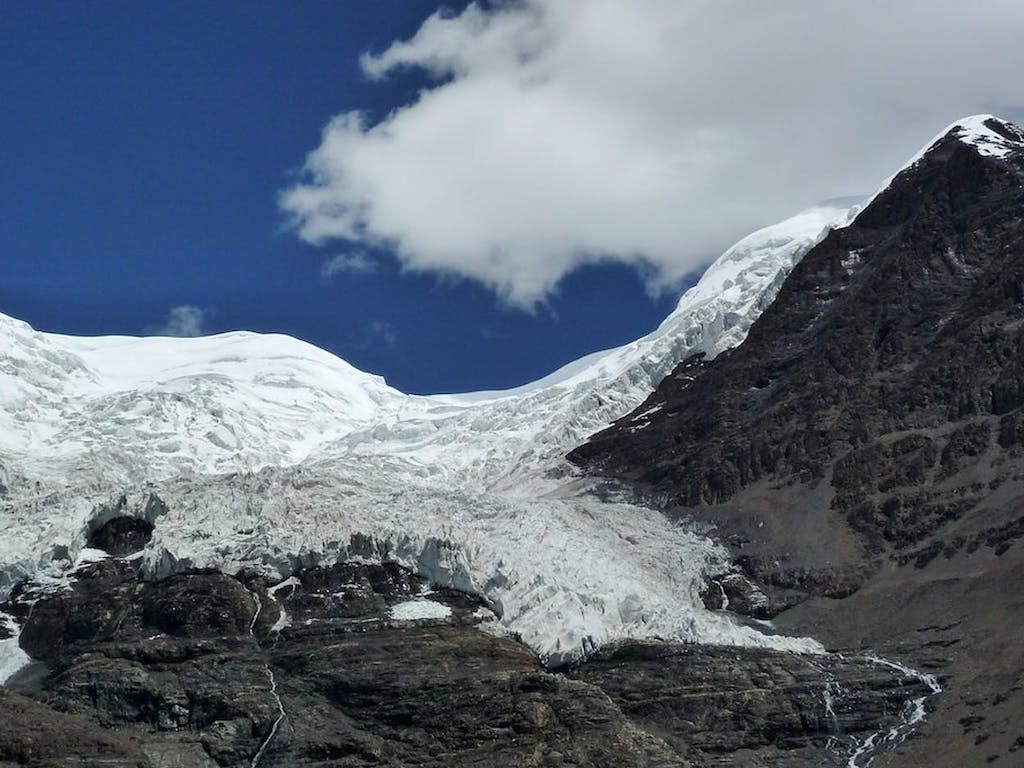4 Mins Read
By: Michael Allen
New research suggests an atmospheric connection between Arctic sea ice melt and anthropogenic aerosol pollution over the Tibetan Plateau.
The Tibetan Plateau is one of the world’s most pristine ecological regions. Known as the Third Pole, it contains the largest land ice masses outside the poles, with glacier meltwater contributing to water supplies for more than a billion people.
Because of its sparse population, the Tibetan Plateau has negligible local pollution but is flanked by large deserts and the heavily populated Indo-Gangetic Plain of South Asia. This proximity makes the plateau vulnerable to natural atmospheric pollution from dust storms as well as to anthropogenic aerosols from industrial, transport, and agricultural emissions.
“At present, the Tibetan Plateau remains clean as a whole. However, if external disturbances— for example atmospheric pollutants—continue to increase, a series of environmental risks will be aggravated,” wrote Fei Li in an email. Li is a geophysicist at the University of Bergen and the Bjerknes Centre for Climate Research in Norway and lead author of a new study tracking air pollution over the Tibetan Plateau.
In April, the main source of anthropogenic air pollution on the Tibetan Plateau comes from forest fires and the burning of agricultural wastes from South Asia.
Scientists track pollution as it travels by way of ground-based monitoring stations throughout the Himalayas and the Tibetan Plateau. Combining these data with air mass modeling gives clues to the aerosols’ origins. Research indicates that southwesterly winds carry pollution from South Asia up mountain valleys and over the Himalayas, but the atmospheric circulation that drives this pattern is not well understood.
Assessing a decade of data from two monitoring stations in the interior and on the southern edge of the Tibetan Plateau, Li and other researchers detected an annual peak in aerosols in April. At this time of year, before the summer monsoon, “the main source of anthropogenic air pollution on the Tibetan Plateau is biomass burning—forest fire and burning of agricultural wastes—from South Asia,” Li wrote.
Researchers also identified an indirect connection between Arctic sea ice loss in February and increased aerosol transport to the Tibetan Plateau in April. The team noted that aerosol levels increased with wind speed, evidence that when wind speeds are high enough, they carry anthropogenic emissions from South Asia to the plateau. Disruptions to the jet stream brought on by sea ice loss could increase these upslope winds, researchers said.
The findings were published in Nature Climate Change in August.
A Disrupted Jet Stream
The first step connecting Arctic ice cover and pollution over the Tibetan Plateau is the impact of ice loss on the northern jet stream, the researchers said. This river of fast moving air circling the midlatitudes is driven by the temperature gradient between the equator and the North Pole. As late winter sea ice melts, the Arctic warms, and the temperature gradient decreases. This phenomenon, the researchers said, weakens the jet stream and leads to a prolonged low-pressure trough over East Asia.
As the low-pressure system persists, airflow increases around its southern edge, which speeds up the subtropical jet stream in the lower latitudes, over the Himalayas. This faster jet stream invigorates winds that flow up Himalayan mountain valleys in April, taking air pollution onto the Tibetan Plateau.
Not everyone is convinced by this analysis. James Screen, a climate scientist at the University of Exeter in the United Kingdom, said that researchers in the new study are proposing a long and complex chain of events in which discrete causes at each stage are difficult to document. Sea ice loss is having a profound effect in the Arctic and driving various feedbacks that enhance warming there, said Screen, but effects beyond the Arctic are highly uncertain.
Screen explained that, for instance, scientists are still debating how the decrease in the pole-to-equator temperature gradient could affect the northern jet stream: It could shift poleward, slow, stall, or meander more from north to south.
Regional Issue, Regional Solution
Increased air pollution could have a profound effect on the Tibetan Plateau. Light-absorbing aerosols can warm the local atmosphere and increase the melt rate of glaciers.
Only a large-scale pollution cut can help reduce this transport to the Tibetan Plateau.
Maheswar Rupakheti, Institute for Advanced Sustainability Studies
“Even if we look at the places [on the Tibetan Plateau] where there are no major sources of anthropogenic emissions, we see almost 50% of black carbon is coming from fossil fuel burning,” said Maheswar Rupakheti, an expert on air pollution–climate interactions at the Institute for Advanced Sustainability Studies in Potsdam, Germany, who was not involved in the new study. “That [figure] means almost half of that pollution is coming from somewhere else. It is regional emissions. It may be from Nepal, India, Pakistan, or further away, but it is a regional issue. For this we need to have regional cooperation. Only a large-scale pollution cut can help reduce this transport to the Tibetan Plateau.”
Li agreed. “It needs joint global action on tackling the reduction of anthropogenic emissions through international cooperation, which is the only way to curb the environmental risks, not only for Tibetan Plateau but also for the Arctic and the whole Earth.”

This story originally appeared in AGU’s Eos Magazine and is republished here as part of Covering Climate Now, a global journalistic collaboration to strengthen coverage of the climate story.
Lead image courtesy of mattwan, CC BY-SA 2.0.




